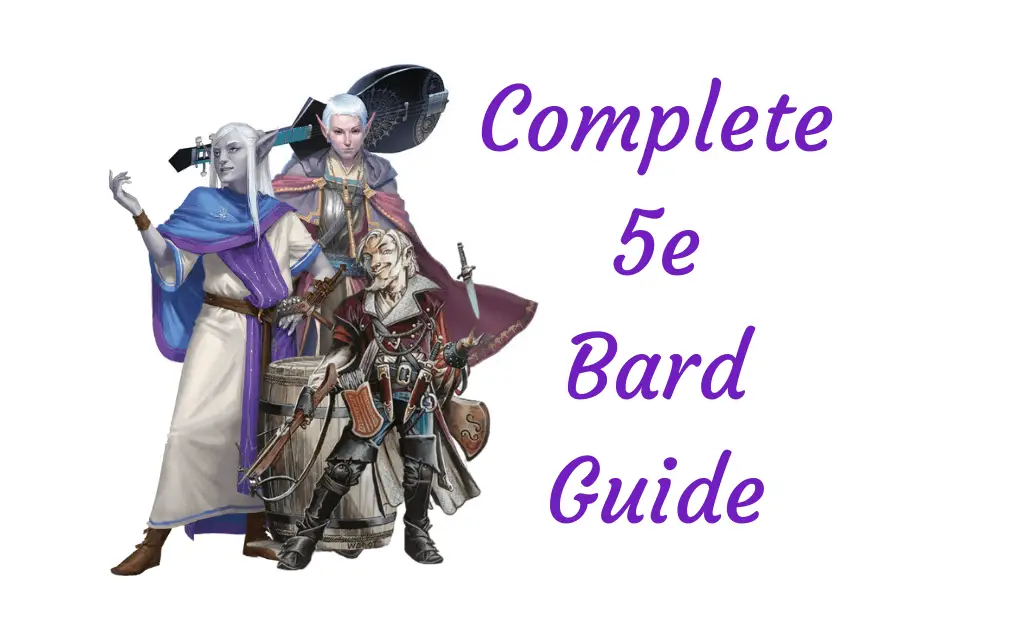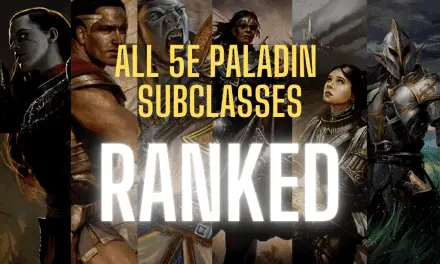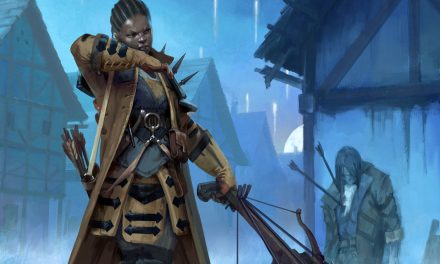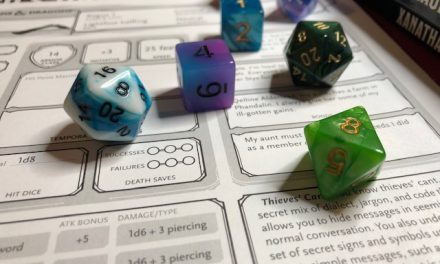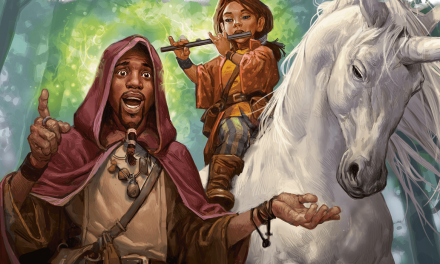I’ve said it before and I’ll say it again: every party is better for having a Bard!
Those who choose to walk the path of the Bard are gifted performers, but the true power of the Bard goes beyond their stage presence!
At their core, Bards are incredibly resourceful. They have a knack for being able to fill in any holes in their party’s composition and are a wonderful support class.
This is a class that’s great for someone who wants to do a little bit of everything in their D&D game.
However, this means that you need to have a strong understanding of how the Bard class works. This will help you always know exactly where to be and what to do as you inspire your allies to victory!
So In this in-depth guide, we’re taking a closer look at the Bard class in D&D 5e. We’ll be covering all of the Bard’s features and options as well as giving you useful tips for optimizing your character.
To help you see a Bard build in action, I’ll include a quick Bard character build as well!
So tune up your lute, do some vocal warmups, and grab a few trusty weapons…
This is the Complete Class Guide to the Bard in D&D 5e!
Bard Class Guide for D&D 5e
As a Bard in D&D 5e, you’re supremely versatile. You have a wide variety of skills, spells, and class features that allow you to always have some kind of trick up your sleeve.
One of my favorite things about Bards is that they have a tendency to pull off some last-minute “clutch” type maneuver that can completely change how a situation is playing out.
It could be a bit of random knowledge they’ve picked up on the journeys, their ability to persuade or deceive others for the party’s benefit, or spells that completely ruin enemies’ plans.
Of course, we can’t forget the buffs! Bardic Inspiration can very often be the difference between victory and defeat!
Most Bards have their own unique ways of supporting their allies. Some may focus on enchantment magic or support casting from the backline while others prefer to stand on the frontlines as melee combatants.
These differences come down to the different Bardic Colleges (subclasses). We’ll cover each of those later in this guide!
What binds every Bard together is their combination of skill and charisma.
Sure, Bards have certain reputations for letting their gift of gab get the party into trouble from time to time. But that same gift can just as easily get them OUT of trouble as well!
As we start diving into the details of the Bard class in D&D 5e, we’ll begin by focusing on things that all Bards have in common.
Be mindful of the Bard Table as you level up! As the party’s Swiss Army Knife, you’ll be using your class features and Bardic Inspiration a lot!
You can find the Bard class on page 51 of the Player’s Handbook.
The Bard Table
| Level | Proficiency Bonus | Bardic Inspiration Die | Features |
| 1 | +2 | d6 | Spellcasting, Bardic Inspiration (d6) |
| 2 | +2 | d6 | Jack of All Trades, Song of Rest (d6) |
| 3 | +2 | d6 | Bard College, Expertise |
| 4 | +2 | d6 | Ability Score Improvement |
| 5 | +3 | d8 | Bardic Inspiration (d8), Font of Inspiration |
| 6 | +3 | d8 | Countercharm, Bard College Feature |
| 7 | +3 | d8 | – |
| 8 | +3 | d8 | Ability Score Improvement |
| 9 | +4 | d8 | Song of Rest (d8) |
| 10 | +4 | d10 | Bardic Inspiration (d10), Expertise, Magical Secrets |
| 11 | +4 | d10 | – |
| 12 | +4 | d10 | Ability Score Improvement |
| 13 | +5 | d10 | Song of Rest (d10) |
| 14 | +5 | d10 | Magical Secrets, Bard College Feature |
| 15 | +5 | d12 | Bardic Inspiration (d12) |
| 16 | +5 | d12 | Ability Score Improvement |
| 17 | +6 | d12 | Song of Rest (d12) |
| 18 | +6 | d12 | Magical Secrets |
| 19 | +6 | d12 | Ability Score Improvement |
| 20 | +6 | d12 | Superior Inspiration |
Bard Class Features
Let’s take it from the top! These are the class features that all Bards have.
Hit Points
Hit Dice: 1d8 per Bard level
Hit Points at 1st level: 8 + your Constitution modifier
Hit Points at Higher Levels: 1d8 (average of 5) + your Constitution modifier per Bard level beyond 1st
Proficiencies
Armor: Light Armor
Weapons: Simple Weapons, hand crossbows, longswords, rapiers, shortswords
Tools: Three musical instruments (your choice)
Saving Throws: Dexterity, Charisma
Skills: Choose any three skills to gain proficiency in.
Bard Starting Equipment
In addition to any equipment you receive from your background, you start with the following equipment:
- A rapier OR a shortsword OR any simple weapon
- A diplomat’s pack or an entertainer’s pack
- A lute OR any other musical instrument (your choice)
- Leather Armor, one dagger
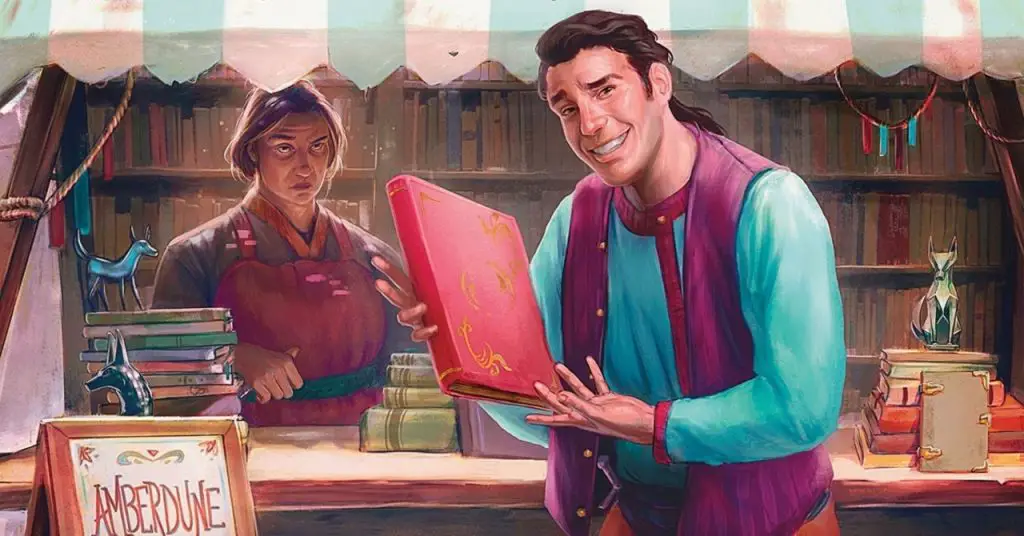
Spellcasting (Level 1)
Among your many talents as a Bard, you’re also a gifted spellcaster!
The Bard Spell List focuses heavily on your role as support for your party. It’s filled with ways to buff allies, debuff enemies, and charm your way to victory.
As you level up, you’ll gain new spell options through both the Bard Spell List and your Magical Secrets feature. We’ll talk about your Magical Secrets feature in just a moment.
Because there’s a lot that goes into how you cast spells, I’ll include a dedicated section to help you out with all things spells further down in this guide!
Bardic Inspiration (Level 1)
As the name might suggest, Bardic Inspiration is your most important feature when playing a Bard.
It allows you to buff your allies but also serves to power your special features based on which Bard subclass you choose at level 3.
To use this ability, you use a Bonus Action to inspire an ally with your music or words. This can be any single creature (except yourself) within 60 feet that can hear you.
That target receives a Bardic Inspiration die from you. The die that they receive is based on your Bard Level. At level 1, this is a d6. You can reference the Bard Table above to see what dice you use for your Bardic Inspiration at each level.
Your newly-inspired ally can now use this Bardic Inspiration die on one ability check, saving throw, or attack roll that they make.
They first roll their d20 as normal. After rolling the d20 (but before the DM says whether or not they succeed), your ally can choose to roll the Bardic Inspiration die you gave them and add the result to the total.
They have this die for 10 minutes or until they use it, whichever comes first.
Keep in mind that a creature can only have one of your Bardic Inspiration dice at a time, so don’t be scared to spread the inspiration around!
You can use Bardic Inspiration a number of times equal to your Charisma modifier between long rests. Just one more reason that you’ll want to focus on making your Charisma score as high as possible!
Because this is so important to your role as the party’s Bard, you’ll want to check out my guide to Using Bardic Inspiration in D&D 5e. I answer frequently asked questions about this feature and explain how to get the best use out of it!
Jack of All Trades (Level 2)
As a Bard, you know at least a little bit about everything!
When you hit level 2, you can now add half of your proficiency bonus (rounded down) to any ability check you make that you aren’t proficient in.
You can find your proficiency bonus on the Bard Table based on your current Bard level.
This is a great case of the classic “I read it in a book once” trope when it comes to your character.
Maybe they haven’t actually tried to calm down an angry horse before, but getting to add that extra bump to an Animal Handling check might give you just enough of a roll to make it work!
Whether it’s from bits of knowledge that you picked up somewhere on your journeys or just plain luck, there’s no skill check that you can’t at least make an honest attempt at!
Song of Rest (Level 2)
It’s hard to deny the healing power that music has. Once you hit level 2, there can be no doubt!
At the end of a short rest when you or your allies use Hit Dice to recover your hit points, you regain an extra 1d6 hit points.
As you level up, the music that you play to soothe your party becomes even more effective. You can see how much extra hit points Song of Rest recovers on the table below.
| Bard Level | Extra Hit Points Recovered |
| 2 – 8 | 1d6 |
| 9 – 12 | 1d8 |
| 13 – 16 | 1d10 |
| 17 + | 1d12 |
Bard College (Level 3)
It’s time to pick an alma mater!
At level 3, you will choose a Bard College for your character. These are subclasses for Bards that expand your character’s abilities and better define how they play.
Currently, there are 8 officially published Bard Colleges to choose from.
We’ll cover the available subclass options in more depth later in this article. For now, just know that you’ll have a big decision to make once you hit level 3!
Expertise (Level 3)
Starting at level 3, you get to choose two skills that you have proficiency in. From now on, you double your proficiency bonus when making checks with those chosen skills.
At level 10, you’ll get to choose two more skills to receive this bonus.
Whoever said that whole “Jack of All Trades, Master of None” line as a negative thing clearly never played a Bard!
Font of Inspiration (Level 5)
Up to this point, you might have had some difficulty managing your Bardic Inspiration.
At level 5, the days where you needed a long rest to regain your expended uses are long gone! With Font of Inspiration, you get back all of your uses of Bardic Inspiration on a short or long rest!
Countercharm (Level 6)
As a Bard, you’re keenly aware that nothing can ruin a perfectly good strategy quite like enchantment magic. After all, you’ve probably used your fair share of it by this point too!
Fortunately, you’ve got a trick up your sleeve to protect your party from such dastardly charms!
As an action, you can start a performance that lasts until the end of your next turn. While you’re doing this performance, you and any friendly creatures within 30 feet of you have advantage on saving throws to resist being charmed or frightened!
To get this benefit, a creature has to be able to hear you.
If you get incapacitated, silenced, or choose to end the performance early (as a free action), the effect ends.
You can do this as often as you need, but make sure you make it count. To get the full benefit from this, you’re effectively taking two turns to protect your friends!
If you’re countering the enemies’ charm or fear effects, make sure that your party is able to quickly follow up and deal with whatever is causing those effects to begin with!
Magical Secrets (Level 10)
The Bard Spell List is great, but there will undeniably be some spells that you wish you could learn.
As it just so happens, now you can!
At level 10, your Bard gets the Magical Secrets feature. This allows you to choose two spells from any class to add to your repertoire. From now on, these spells count as Bard spells for you and are included in the Spells Known section of the Bard’s Class Table.
There is only one requirement for what spells you choose with this feature: they must be either of a level that you can cast (see the table in the Spellcasting section of this guide or the Bard Class Table on page 53 of the PHB) or a cantrip.
You’ll get to use this feature two more times as you continue to level up: once at level 14 and again at level 18.
This is a feature with A TON of applications that can get a bit confusing. I recommend checking out my full guide to Magical Secrets which answers common questions about this feature and also goes over some of the best spells you can learn with it!
Superior Inspiration (Level 20)
For the Bard’s capstone ability, you’ll never be entering combat without your Bardic Inspiration again!
When you roll initiative and don’t have any charges of your Bardic Inspiration left, you instantly regain use.
This is handy in some extra tight situations, but it’s honestly a little underwhelming as a capstone feature.
Considering that you have been able to regain all of your uses of Bardic Inspiration with a short rest for 15 levels now, I think it’s pretty unlikely for you to be caught off-guard and without the ability to inspire your allies.
It’s not terrible and can definitely help in certain situations, but it’s not something you’ll likely be too excited about.

Optional Class Features for Bards
Tasha’s Cauldron of Everything gave us two new Bard subclasses and some very useful optional features for Bards.
Disclaimer: Check with your DM first to make sure that they’re cool with using content from TCoE in your game. (Most won’t have a problem with it, but being clear about what books are being used is a key part of a good Session Zero!)
Personally, I’m a fan of these optional Bard features. They do a lot to expand on the Bard’s utility and versatility in a way that doesn’t feel forced.
Additional Bard Spells
The first optional feature from Tasha’s Cauldron expands upon your Bard’s available spells.
In keeping with the strengths of the Bard class, these spells give you more options for ways to buff your allies and keep control over the battlefield.
You gain access to 15 spells of varying levels in total. For each spell level, you have at least one new option with this expanded spell list.
The specific spells added can be found on page 27 of Tasha’s Cauldron of Everything.
Magical Inspiration (Level 2)
With the Magical Inspiration feature, your allies get a couple of new options when using a Bardic Inspiration die that you’ve given them.
If they are casting a spell that restores hit points, they can roll the Bardic Inspiration die and add the result to the total number of hit points being restored.
Similarly, they can do the same with a spell that deals damage. By adding the result of the Bardic Inspiration die to the spell’s damage, your Wizard will be able to serve up some extra spicy fireballs!
Bardic Versatility (Level 4)
Sometimes you make a choice that just ends up not being as useful as you had hoped.
It happens.
But Bards are used to rolling with the punches and changing their approach at a moment’s notice!
With Bardic Versatility, you are able to change some of your abilities when you reach a level that gives you an Ability Score Improvement feature. On the Bard Class Table, this happens at levels 4, 8, 12, 16, and 19.
This gives you two options:
- You can replace one of the skills that you chose for your Expertise feature with a different skill that you have proficiency in. Expertise cannot be applied to the same skill multiple times.
- Replace a Bard cantrip that you know with a different one from the Bard Spell List.
The Bard’s Role in the Party
Bards can fit nearly any role in a party, but the most common/important tend to be:
- Face (Put that Charisma to work! Make friends, deceive enemies, and captivate audiences)
- Control (Buff your allies while debuffing, charming, and incapacitating enemies.)
- Utility (You’ve got the skills to pay the bills! Between those and some clever spellcasting, you can bring a ton of utility to your party!)
The subclass that you choose for your Bardic College at level 3 will specialize your character in a certain way. You’ll still have the ability to fill in outside of that specialty, but it really focuses you towards a specific role.
Some subclasses will make you a better combatant. The College of Swords focuses on isolating and outmaneuvering opponents while the College of Valor makes you a hardier front-line combatant.
Subclasses like the Colleges of Eloquence, Whispers, and Glamour tend to make for a better Face for your party. While almost any Bard could fill that role, subclasses like these tend to be exceptionally good at this.
You’ll ultimately be wearing several hats regardless of what subclass you choose. With so much versatility, you can pretty seamlessly fill in anywhere where your party needs the extra help.
Thanks to features like Magical Secrets, you could even find yourself standing in as a “Blaster” character lobbing fireballs at whatever enemies cross your path if you’re so inclined!
To learn more about character roles and party composition, check out my other article on Character Roles and Party Composition! Because you’ll be wearing so many hats in the party, I find that it helps to have a clear idea of the different roles within a party’s composition!
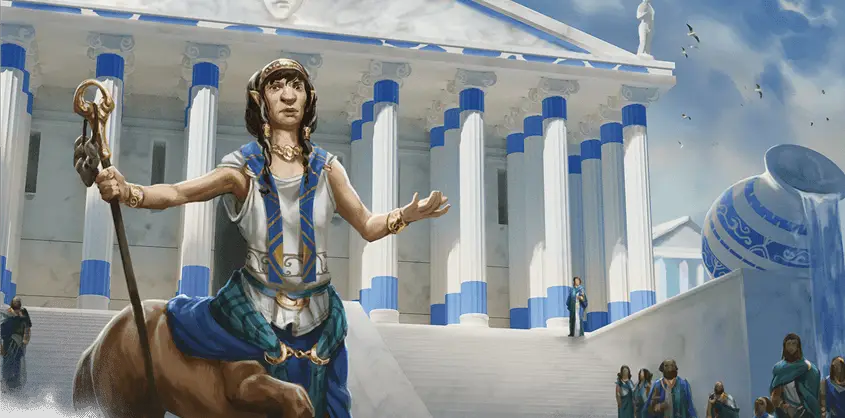
Subclasses / Bard Colleges
We’ve briefly mentioned some of the Bard subclasses, so let’s go ahead and talk about your options!
At level 3, you will pick a Bard College for your character.
Each of these subclasses will help you carve out a new level of specialization for your character. You’ll gain new features that will enhance how your character works and, in many cases, entirely redefine how they play!
When you’re first making your Bard character, I recommend having an idea of what subclass you’d like to play.
If your campaign isn’t starting at level 3, it will help you have an idea of how to build your character in the meantime. Each of these subclasses has a unique playstyle and you’ll want to build your character with those abilities in mind!
I have my own opinions about how each Bard subclass ranks, but ultimately the best choice is the one that you want to play.
We’ll take a look at each of the Bard College options as an overview here. If any of them sound interesting to you, I’ve included links to my guides that take a closer look at the ins and outs of each option!
Currently, there are 8 Bard subclass options to choose from.
These subclasses are published in the following books:
The Lore and Valor Bard Colleges are found in the Player’s Handbook.
You can find the Glamour, Swords, and Whispers Colleges in Xanathar’s Guide to Everything.
Tasha’s Cauldron of Everything introduces the Colleges of Creation and Eloquence.
Most recently, the College of Spirits Bard can be found in Van Richten’s Guide to Ravenloft.
College of Lore
The College of Lore subclass is the iconic Bard. These characters collect knowledge in any form that they can find it: songs, stories, skills and more.
What results from this is the ultimate generalist character. With a wide variety of skill proficiencies, extra Magical Secrets, and one of the coolest uses of Bardic Inspiration in 5e, the College of Lore Bard deserves its iconic status!
- Bonus Proficiencies (Level 3): You gain proficiency with three more skills of your choice.
- Cutting Words (Level 3): Use your Bardic Inspiration dice to reduce enemy attack, ability, and damage rolls.
- Additional Magical Secrets (Level 6): Gain an extra two spells of your choice from any class. Not only do you get MORE spells, you gain them sooner than any other Bard.
- Peerless Skill (Level 14): Use your Bardic Inspiration to increase your rolls on ability checks.
Check out the full College of Lore Bard Guide for more!
College of Valor
If you prefer your Bard to be on the frontlines of combat as a daring skald who inspires their allies to greatness, the College of Valor is for you.
These Bards gain features to make them hardier as they charge into melee combat. They get an extra attack as well as proficiency with medium armor, shields, and martial weapons. In the middle of the action, these Bards can put out respectable damage while still being a powerful support for their party.
- Bonus Proficiencies (Level 3): You gain proficiency with medium armor, shields, and martial weapons.
- Combat Inspiration (Level 3): Allies can use your Bardic Inspiration to add to the damage they deal or increase their Armor Class against an attack.
- Extra Attack (Level 6): You can now attack twice when taking the Attack action on your turn.
- Battle Magic (Level 14): When you cast a Bard spell as an action, you can also use your bonus action to make a weapon attack.
Sounds good? Check out the College of Valor Bard Guide!
College of Glamour
If using fey magic to enchant the hearts and minds of those around you sounds appealing, look no further than the College of Glamour Bard!
Choosing this subclass makes your enchantments especially potent. Not only can you win the eternal admiration of those around you with ease, but you can entirely shut down those who would stand against you with features like Mantle of Majesty and Unbreakable Majesty.
- Mantle of Inspiration (Level 3): Use your Bardic Inspiration to take on a wondrous appearance. Give your allies temporary hit points and enable them to immediately use their reaction to move up to their speed without provoking attacks of opportunity.
- Enthralling Performance (Level 3): Perform for at least 1 minute to charm humanoids who watched you. They become your biggest fans and will speak favorably about you while hindering those who oppose you.
- Mantle of Majesty (Level 6): Take on an unearthly appearance for 1 minute and get free casting of the Command spell as a bonus action for the duration. It’s fun to be the boss!
- Unbreakable Majesty (Level 14): Use a bonus action to take on a magical, majestic presence for 1 minute or until you’re incapacitated. Creatures have to make a Charisma saving throw to attack you. If they fail, they have to attack someone else or waste the action. If they succeed, they have disadvantage on saves against your spells on your next turn.
Learn more with the full College of Glamour Bard Guide!
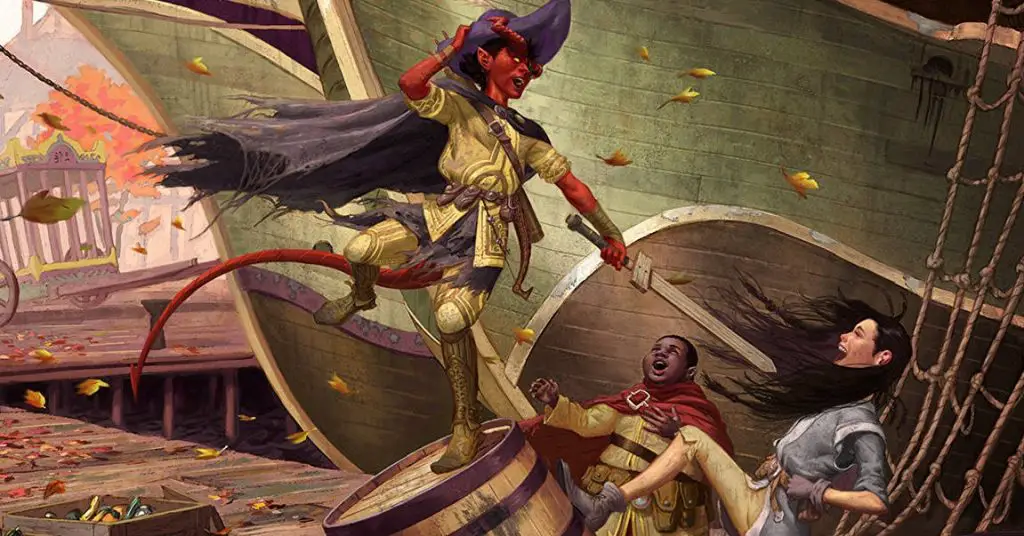
College of Swords
College of Swords Bards combine their talents for both performance and swordsmanship into a force of technical mastery. The same techniques and flourishes that dazzle their audiences can just as well be used to outmaneuver enemies in combat.
Like the Valor Bard, the College of Swords Bard shines best in melee combat. Unlike the Valor Bard, however, they can use Bardic Inspiration dice to use special Blade Flourishes that add extra “oomph” to their attacks.
- Bonus Proficiencies (Level 3): You gain proficiency with medium armor and scimitars. Simple and martial weapons that you’re proficient with can now be used as a focus when casting a Bard spell.
- Fighting Style (Level 3): Choose between Dueling and Two-Weapon Fighting styles for extra bonuses in combat.
- Blade Flourish (Level 3): Use your Bardic Inspiration dice to pull off special techniques with your blade. Additionally, taking the Attack action increases your movement speed by 10 feet until the end of your turn.
- Extra Attack (Level 6): Taking the Attack action on your turn lets you make two attacks.
- Master’s Flourish (Level 14): Save your Bardic Inspiration dice when using your Blade Flourish feature by rolling a d6 for free instead of spending a dice.
Check out the College of Swords Bard Guide for more!
College of Whispers
With so much Charisma and knowledge of how people work, it’s only inevitable that some Bards would be drawn to a life of sabotage, deceit, and spycraft!
Bards of the College of Whispers are able to manipulate and instill fear in others with veiled threats and mind games. Capturing the shadows of those who die near them, these Bards can assume new identities with ease.
When the talking is done and it’s time for combat, they use their Bardic Inspiration dice to add powerful psychic damage to their attacks.
- Psychic Blades (Level 3): Use your Bardic Inspiration to add extra psychic damage to your attacks.
- Words of Terror (Level 3): Speak to a humanoid alone for 1 minute to make them afraid of you or a creature of your choice for 1 hour, until it’s attacked/damaged, or until it witnesses its allies being attacked/damaged. They are unaware that you’ve charmed them in this way.
- Mantle of Whispers (Level 6): Capture the shadow of a humanoid that dies near you. Use this shadow to disguise yourself as them and gain access to general information that they would know.
- Shadow Lore (Level 14): Secretly whisper a message to a creature of your choice. If the target fails its Wisdom saving throw, it is convinced that you know its deepest, darkest secret and is charmed by you for the next 8 hours. It obeys your commands for fear that you’ll reveal its secret. When the effect ends, the creature doesn’t know that it was charmed.
Sneak over to the full Guide to the College of Whispers Bard for more!
College of Creation
If you enjoy finding creative solutions to problems and have an eye for what “could be”, the College of Creation might be calling your name!
Your Bardic Inspiration takes on unique forms and gains extra effects depending on how your inspired ally chooses to use it.
Where this subclass really stands out is its ability to conjure items. Not only can this be great for some out-of-the-box problem solving, but it can also offset costly materials for spells.
Oh, and you can also animate your items to help you which is just awesome. Feel free to perform a rendition of “Be Our Guest” while your animated ally clobbers your enemies.
- Mote of Potential (Level 3): Your Bardic Inspiration has additional effects depending on what your ally uses it for.
- Performance of Creation (Level 3): Create a non-magical item from thin air. The maximum value and size of the items that you can create increases as you level up.
- Animating Performance (Level 6): Bring an inanimate object to life. The item obeys your commands and lasts for 1 hour, until its reduced to zero hit points, or until you die.
- Creative Crescendo (Level 14): Your Performance of Creation now creates multiple items at once. Additionally, there is no limitation on the maximum gold value of the items that you create.
I cover all of this and more in the Guide to the College of Creation Bard!
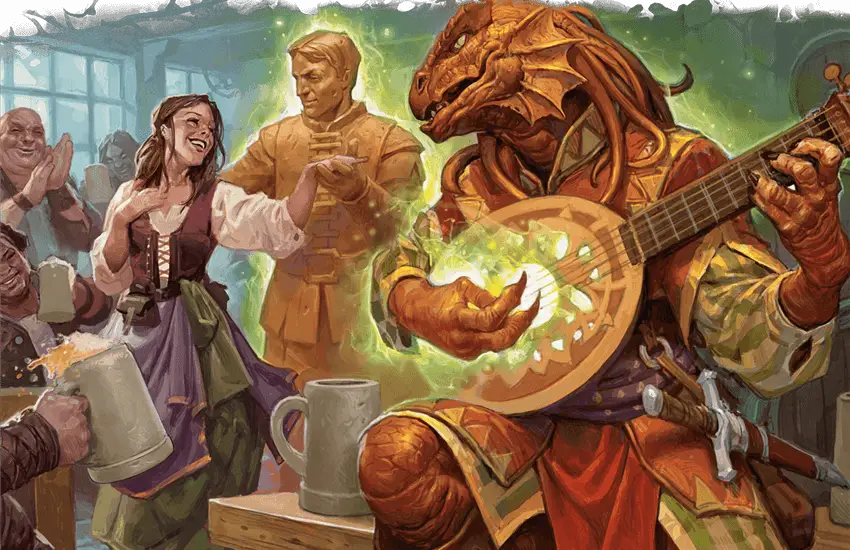
College of Eloquence
The College of Eloquence holds the art of speaking and rhetoric in the highest regard.
On one hand, these Bards might be characters of a political nature like a senator who is used to crafting compelling arguments and building alliances.
On the other hand, you could also portray an Eloquence Bard as a classically trained actor whose monologues have a profound ability to stir the hearts of others.
Either way, you’re the ultimate party Face. You’ll virtually never fail a Charisma check and you will get incredible value from every use of your Bardic Inspiration feature.
- Silver Tongue (Level 3): When you make a Persuasion or Deception check and roll a 9 or lower, you treat the roll as a 10.
- Unsettling Words (Level 3): Use your Bardic Inspiration to reduce the result of the target’s next saving throw before the start of your next turn.
- Unfailing Inspiration (Level 6): If your ally adds your Bardic Inspiration die to a roll but still fails, the Bardic Inspiration die is not expended.
- Universal Speech (Level 6): Targeted creatures can magically understand you regardless of language for 1 hour.
- Infectious Inspiration (Level 14): When your ally adds your Bardic Inspiration die to a roll and succeeds, you can use your reaction to give another ally a Bardic Inspiration die for free.
Check out the full College of Eloquence Bard Guide to become a master of speaking!
College of Spirits
The most unique (and macabre) subclass available to Bards is none other than the College of Spirits.
Rather than the typical lute-strumming Bard whose performances delight and entertain audiences, the College of Spirits takes a different approach. These characters are gifted Mediums who use their ability to channel spirits to potentially incredible effect as they support their allies.
The spirit that the College of Spirits Bard channels is randomly determined by rolling the Bardic Inspiration die. As they level up, they can learn to somewhat control what spirits are being channeled and what effect it will have.
If your Bard has a passion for reading Edgar Allan Poe and walking through graveyards, they’ll be in good company in this Bardic College!
- Guiding Whispers (Level 3): You gain the Guidance cantrip and it has a range of 60 feet for you.
- Spiritual Focus (Level 3): Your spellcasting focus is now more thematically appropriate by allowing you to use Tarokka cards, crystal balls, and so on. This powers up at level 6 by increasing the amount of damage/healing your spells do.
- Tales from Beyond (Level 3): Use your Bardic Inspiration to conjure spirits with random effects.
- Spirit Session (Level 6): Conduct a ritual to channel spirits and gain a new Divination or Necromancy spell of your choice from any class. The number of participants in the ritual determine the spell’s maximum level.
- Mystical Connection (Level 14): Gain more control over what spirits you conjure with your Tales from Beyond feature by rolling twice and choosing which result you want. Rolling the same on both dice lets you pick any spirit from the Spirit Table.
Channel your own spirits with the full Guide to the College of Spirits Bard!
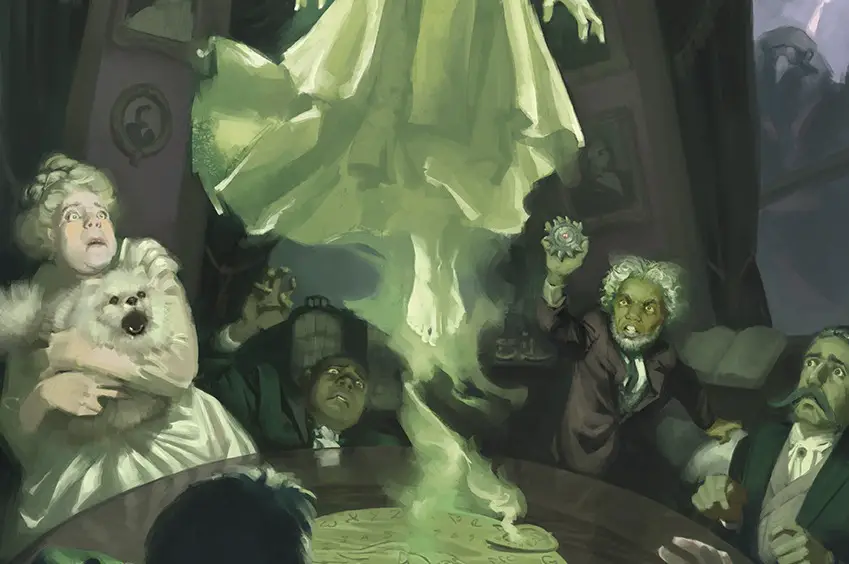
Bard Spellcasting Explained
As a Bard, you are more than just a pretty face! You’re also a gifted spellcaster who uses arcane magic to incredible effect!
The Bard Spell List (on page 207 of the PHB) focuses heavily on spells that aid you in your role. Spells that heal/buff allies, debuff or incapacitate enemies, or offer handy utility make up most of the options.
You get some spells that deal damage, but if that’s your focus then you’ll want to pick up some more “blasty” type spells with your Magical Secrets feature.
Regardless of what role you primarily fill in the party and what subclass you choose, the Bard Spell List has several options that will help you.
Because the Bard’s spellcasting ability is so important to how your character functions, let’s go over how spellcasting works for your character.
We’ll start by laying out the Bard’s Spell Table then go into what that means.
Also Check Out: The Best Bard Spells By Level in D&D 5e!
Bard Spells Table
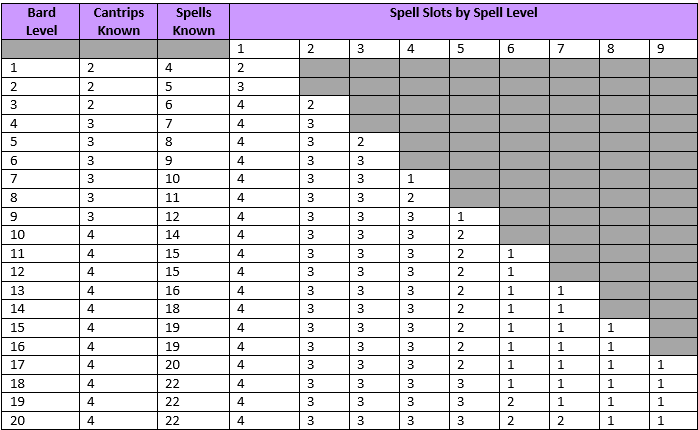
Spellcasting Ability
Bards cast spells from the energy and passion that they put into their performances. Because of this, Charisma is your spellcasting ability.
Casting Spells
You’ll find spells that mention your spellcasting ability modifier. That is your Charisma ability modifier.
So to figure out the modifier on a spell attack, it would be:
Spell Attack modifier = your Proficiency Bonus + your Charisma Modifier
For a spell attack, you would roll your D20 then add this spell attack modifier to it. If it is the same or higher than the enemy’s AC, it hits. Otherwise, the spell attack misses.
It works similarly for determining your Spell Save DC. That is, the number that an enemy must meet or beat with their saving throw to resist the effect from one of your spells.
Your Spell Save DC is calculated as follows:
Spell Save DC = 8 + your Proficiency Bonus + your Charisma Modifier
This means that the two ways to increase your spellcasting performance are by increasing your Charisma ability and leveling up (which increases your Proficiency Bonus.)
Keep in mind that different spells take different times to cast. Most will take your Action, but some may have to be cast using your Bonus Action or Reaction. This is detailed in the spell’s description.
Ritual Spells
Some spells will be tagged as “Rituals.”
These are spells that give you a choice in how you would like to cast them. You can use a spell slot to cast the spell with its normal casting time or take an extra 10 minutes to cast it as a ritual.
Casting a spell as a ritual lets you save the spell slot by taking slightly more time to cast it.
You need to have the spell on your list of Spells Known to do this.
Because your Bard has the Ritual Casting feature, this gives you a nifty option! There are going to be situations where you have more time than spell slots, so this lets you help your party without spending all of your spell resources.
That’s the short version of how ritual casting works and all you really need to know for now. However, if you’re curious to learn more about how ritual spells work, you can read that article by clicking here.
Spellcasting Focus
As a Bard, you are able to use musical instruments as a spellcasting focus.
Spells typically require some assortment of components to cast. These are broken down into Verbal, Somatic, and Material components.
Verbal and Somatic are the words and gestures that you use to cast the spell. Using your instrument of choice as a spellcasting focus lets you overlook the Material components that may be required by a spell.
If a spell that you are casting mentions that it requires some materials like a caterpillar cocoon, a tiny tart, or a rose petal (to name a few), you can safely ignore these requirements if you have your instrument.
The only exception to this is spells that require material components with a specific gold cost. These are usually very powerful spells and therefore require more than just a spell slot to cast.
Changing Spells
Choose your spells carefully as you aren’t able to change them daily like a divine caster (such as a Cleric or Druid) can.
However, if you just aren’t getting as much use out of a spell as you had hoped, you aren’t necessarily stuck with it forever.
When you gain a Bard level, you can replace one of your known spells from the Bard Spell List with another. The new spell must also be from the Bard Spell List and must be of a Spell Level that you can cast.
For example, a level 6 Bard doesn’t have access to level 4 spells yet. They cannot take Polymorph (a level 4 spell) because they won’t have a level 4 spell slot until they hit level 7.
However, if that Bard just isn’t getting the value out of Unseen Servant (a level 1 spell) that they expected, they can swap that out when they level up.
They might choose a different level 1 spell or might prefer to gain a new level 3 spell option. They still have the same amount of spell slots but have more options for how they use them now.
Don’t be afraid to switch up your spells and anticipate your group’s needs! If you can do this well, you’ll always be prepared for what lies ahead!
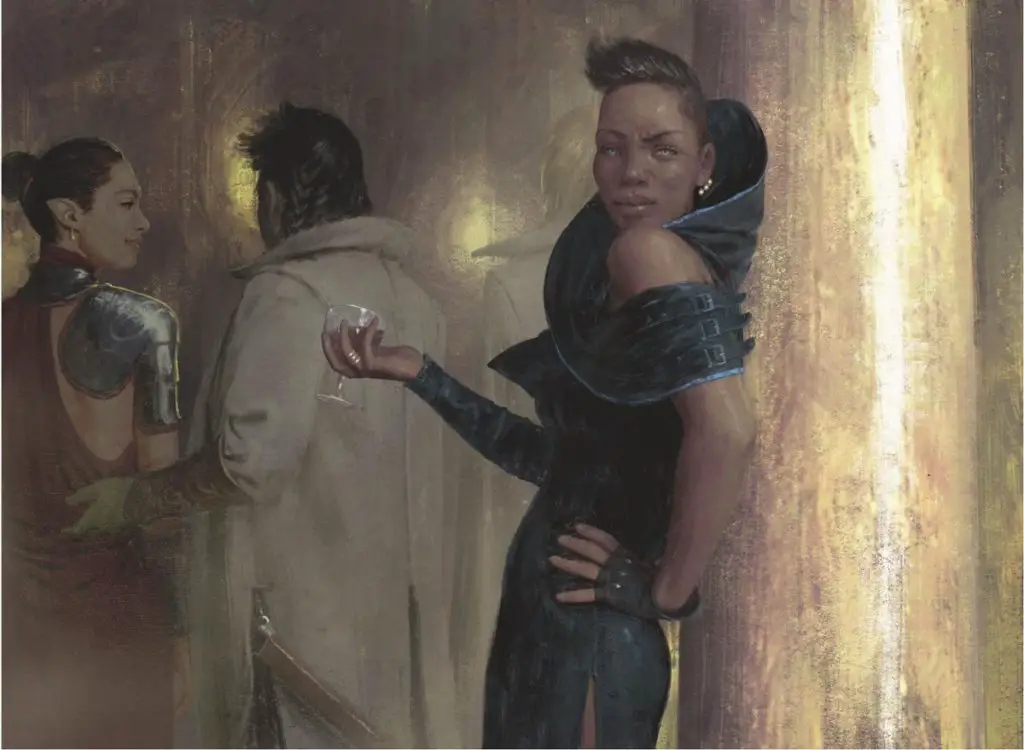
Optimization Tips for Bards in D&D 5e
As creatives and entertainers, Bards love to push boundaries and this shows in their class!
There are tons of different ways that you can build and optimize your Bard character. It largely depends on what roles you’re filling in the party, how you choose to do that, and your own personal taste.
However, I want to go over some quick tips that will help you make a character that performs well.
Rather than making a concrete statement of “this is the ultimate Bard build,” I’d rather focus on what your primary considerations should be when building your character.
At the end of the day, it’s most fun to play the character that you want to play and that works well with the group. Don’t be afraid to remix and experiment with your character’s build if it adds to the story!
With that said, here are some quick tips to help you get the most out of your Bard character in D&D 5e.
Abilities
Let’s start at the basics: your character’s ability scores.
Charisma is the single most important ability for a Bard. It powers nearly everything that your character will be doing in the game. Whether they’re schmoozing with some NPCs, casting spells, performing in a tavern, or inspiring their allies, their ability to do these things well hinges on how charismatic they are.
- Strength: Most Bards will make this their “dump stat” or lowest priority ability. Valor Bards are the main exception to this since they are meant to be hardy frontline combatants. If you’re not a Valor Bard, you can likely skip this ability.
- Dexterity: Dexterity is almost always a good investment. It gets you more AC, helps when you’re attacking with Finesse weapons (like rapiers, daggers, or scimatars) and is used for several useful skills.
- Constitution: Constitution directly affects how many hit points you have. If you plan on staying in the party’s backline with ranged weapons and spells, you can probably prioritize other abilities over this one. Either way, I definitely wouldn’t recommend making it your lowest ability score.
- Intelligence: Intelligence is certainly useful, especially if you plan on taking knowledge-based skills like Arcana, Religion, and Nature. But your spellcasting is based in Charisma which means that have a lower Intelligence won’t hinder your casting ability. If you plan on being a more studious Bard (like the College of Lore) or doing any trap finding (with Investigation), this might be more important to you. Otherwise, it’s not as much of a priority.
- Wisdom: Wisdom will help you with observational skills like Perception, Insight, and Survival. A better Insight skill can really help you if you’re playing the party’s Face and the adventure has a fair amount of intrigue. Otherwise, this is mostly only useful if your Bard is going to be filling a type of “scouting” role in the party.
- Charisma: Hands down, Charisma should be your highest ability score. It powers virtually everything that the Bard class does! Get this score to 20 as fast as you can!
Races
Tasha’s Cauldron of Everything introduced optional new rules that remove how your chosen character race affects your stats. However, not all groups use that rule.
If you are looking to optimize your Bard and aren’t using these variant rules from Tasha’s Cauldron, these are some of the best choices for your character’s race.
- Half-Elf: Half-Elves get a +2 bonus to Charisma as well as +1 to two other abilities of their choice. Combine that with Darkvision, advantage against charms, and two more skill proficiencies and you have a very solid Bard right out of the gate!
- Tiefling: Tieflings’ +2 bonus to Charisma and +1 bonus to Intelligence makes them another ideal Bard choice. Having natural fire resistance is never a bad thing and their Infernal Legacy trait gives Tiefling Bards more Charisma-based spells. Viciously Mock your enemies in Infernal! Why not?
- Dark Elf (Drow): Drow benefit from the Elven +2 bonus to their Dexterity as well as being resistant to charms. They specifically also gain a +1 bonus to Charisma and get more Charisma-based spells thanks to their Drow Magic trait. Sunlight Sensitivity can be a problem, though, so make sure you have a plan for that!
- Lightfoot Halfling: I try not to let my bias towards Halflings show, but they do make for exceptional Bards! Gaining a +2 to Dexterity helps them stay quick on their feet while the Lightfoot +1 Charisma bonus adds to your most important ability score. The Halfling Nimbleness and Naturally Stealthy traits help keep your movement options open while also letting you avoid unwanted enemy attention by hiding behind your larger friends. Not to mention that rerolls with the Halfling’s “Lucky” trait are always useful to have!
- Variant Human: Variant Humans tend to be a solid pick for any class. Using the Variant Human, you can increase your Charisma score while also getting a bonus feat at character creation. While there aren’t many feats that I would recommend taking instead of an Ability Score Increase before you’ve maxed out your Charisma score, getting a free feat at level 1 is pretty sweet. Inspiring Leader is a particularly good choice for Bards who want to keep their party buffed!
- Dragonborn: Dragonborn get a +1 Charisma bonus, but I’m specifically including them as a strong choice for Valor Bards thanks to their additional +2 Strength bonus. You gain resistance and a breath weapon based on your draconic ancestry as well!
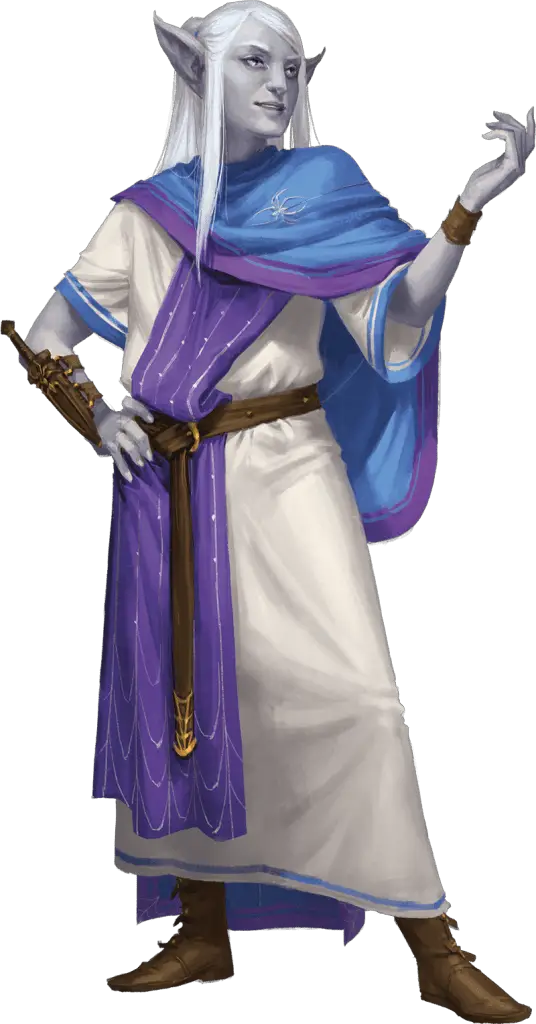
Backgrounds
Your Bard can have any background that you want. If you’re looking for an optimized pick, though, there are a couple of options that you should certainly consider!
- Entertainer: The standard, iconic Bard background. You get proficiency in Acrobatics and Performance plus Disguise Kits and an extra instrument. Additionally, you can always find a place to perform and build a reputation amongst the people there!
- Charlatan: If you’re more inclined to play a character in that “morally gray” area, this could be a great pick for you. You gain proficiency in the Deception and Sleight of Hand skills as well as with Forgery and Disguise Kits.
Feats
Feats can really add to your abilities as a Bard, but it’s generally better to focus on increasing your ability scores instead of gaining feats. Considering how many skill proficiencies you’ll be juggling, you’ll generally get more value from increasing those.
However, there are a few feats in particular that can make it worth it for Bards of any college!
- Alert: Being able to go early in the combat gives you opportunity for some very high impact. Not only does it give you space to buff up your allies from the get-go, but big control spells like Hypnotic Pattern and Sleep can make the enemies useless against your party!
- Inspiring Leader: You’ve got the Charisma score to make this very useful! After every short or long rest, you can bolster your party with temporary hit points!
- Defensive Duelist: This can come in handy pretty often considering that you’re probably only wearing light armor. If you are wielding a Finesse weapon (like a rapier), you can use your reaction to add your proficiency bonus to your AC. This is good for Bards who want to stay agile but still be on/near the front lines in combat!
- War Caster: Losing concentration thanks to taking damage is a pretty awful feeling. This gives you advantage on saves to maintain concentration while also letting you cast spells when an enemy provokes an opportunity attack from you.
These are my standout recommendations for most Bards. To learn more about Feats, check out my article on Feats and how they work for more tips!
Bard – Quick Build
Alright, so with all of that covered, let’s put it all together and make a Bard!
Character Info
Hershel Honeypot
Lighfoot Halfling
Level 3, College of Lore Bard
Neutral Good
Abilities
For this, we’ll use a standard array of ability scores.
We’ll choose which abilities to apply each score to now. In a standard array, we have an 8, 10, 12, 13, 14, and 15 to add to whichever abilities we’d like.
Once we choose which abilities get each base score from the standard array, we factor in any modifiers.
| Ability | Base | Modified |
| Strength | 8 | 8 |
| Dexterity | 14 | 16 |
| Constitution | 12 | 12 |
| Intelligence | 13 | 13 |
| Wisdom | 10 | 10 |
| Charisma | 15 | 16 |
Personality/Background
Hershel will take the Entertainer background. While he’s retired from the life of a traveling troubadour in favor of something more quiet and predictable, he’s never forgotten how to work an audience!
He knows a relevant story to nearly every situation and is quick to share it. Whenever there is a disagreement or otherwise tense situation, Hershel tends to have a calming effect on others.
Hershel frequently finds himself as the “voice of reason” in situations and people are rarely upset at him for long if they even get that way, to begin with!
The lovable Halfling loves seeing peoples’ eyes light up as he shares stories, poems, and songs with them. He simply can’t get enough of that feeling and hopes he’s inspired others to write and tell stories of their own.
Unfortunately, Hershel’s wit sometimes lands him in trouble. He’ll often find himself so delighted with a clever line or observation that he forgets it’s sometimes best to not speak your mind.
The Biography of Hershel Honeypot
As a Halfling of a certain age, Hershel Honeypot found himself reflecting on his life. How long had he been in this little village now?
The years seemed to fly by faster and faster these days…
There was a time when Hershel Honeypot had traveled the lands with a group of like-minded entertainers.
They called themselves The Ragged Raconteurs of Rockwell. Every night’s performance would end in laughter, cheers, and applause before the troupe would celebrate their performance at the local tavern and prepare to head to the next town.
Looking back, he had believed that those times would never come to an end.
Those were the days.
Hershel was fond of those memories and the people of all ages in his quiet village loved listening to his stories and songs. After all this time, he could still tell them perfectly from memory each and every time.
But that was the problem… To Hershel, the stories had gotten a bit stale.
In truth, he never felt old until he found himself (somehow) retired in this village. It was supposed to be for just a short while and then the Ragged Raconteurs would get back together. A few weeks, months, or maybe even just a couple of years at most is what they expected.
“Right!” Hershel exclaimed as he began packing his belongings. No more waiting around for new adventures to come and find him! If he wanted new stories, he’d have to go and find them himself!
“Let’s get the old band back together,” he said as he began walking towards the main road away from the village.
Villagers looked on in curiosity.
“I’ll be back!” Hershel called out towards them with a laugh, “Just wait ‘til you hear what happens next!”
Skills
Hershel Honeypot is a performer first and foremost.
His years as a traveling troubadour have led to him becoming exceptionally good at connecting with others. He’s met enough people from a multitude of backgrounds and personalities to have no problem becoming fast friends with most people he meets.
Meanwhile, his time in retirement spent reading every book he could get his hands on led to him also developing proficiency in several knowledge-based skills.
Hershel’s skill proficiencies are:
- Acrobatics, Performance (from his Background)
- Persuasion, Insight, Perception (From the Bard class)
- Arcana, Nature, Religion (Bonus Proficiencies from the College of Lore)
For his Expertise feature from the Bard Class, Hershel doubles his proficiency bonus in:
- Performance
- Persuasion
He is proficient in the following tools:
- Disguise Kit, Pan Flute (from his Background)
- Lute, Shawm, Bagpipes (from the Bard class)
Playing Hershel Honeypot
Hershel is a bit of a firecracker who refuses to take it easy. He has a love for adventure and doesn’t want to miss a second of the party’s quest. Every detail of the party’s adventure (with a few creative embellishments here and there…) gets recorded in his journal.
He acts as the party’s “Face” when it’s time to make friends or pleasantries. Between his storytelling theatrics and knack for making friends, he’s a very persuasive individual.
In combat, Hershel focuses primarily on buffing his allies with Bardic Inspiration and keeping them in fighting shape. He’s handy with spells and won’t hesitate to use illusions or enchantments to confuse or incapacitate enemies.
If push comes to shove, he also has his trusty shortsword and crossbow to help out with either melee or ranged combat.
Conclusion – The Bard in D&D 5e Class Guide
I hope you’ve enjoyed this guide to the Bard in D&D 5e!
Bards rank pretty high among my personal favorite classes to play, so I really enjoyed writing this class guide. More than most other classes, I particularly like how the Bard subclasses take the class in interesting new directions without overwriting the core Bard experience.
Want to stay updated on all of the latest content here on Tabletop Joab? Subscribe to the newsletter using the form below!
You can also follow me on Facebook and Twitter.
If you found this article helpful and want to support the site, you can buy me a coffee here! (It’s not expected, but very appreciated!)
Got questions or want to share a story about your Bard character? Leave a comment below!
Quick note: If you’re playing in person, I recommend getting spell cards to make your role as a caster much easier. You can read my review here.
Want a good laugh? Check out this article about what happened when I had an AI make a D&D character! (It gets really weird…)

